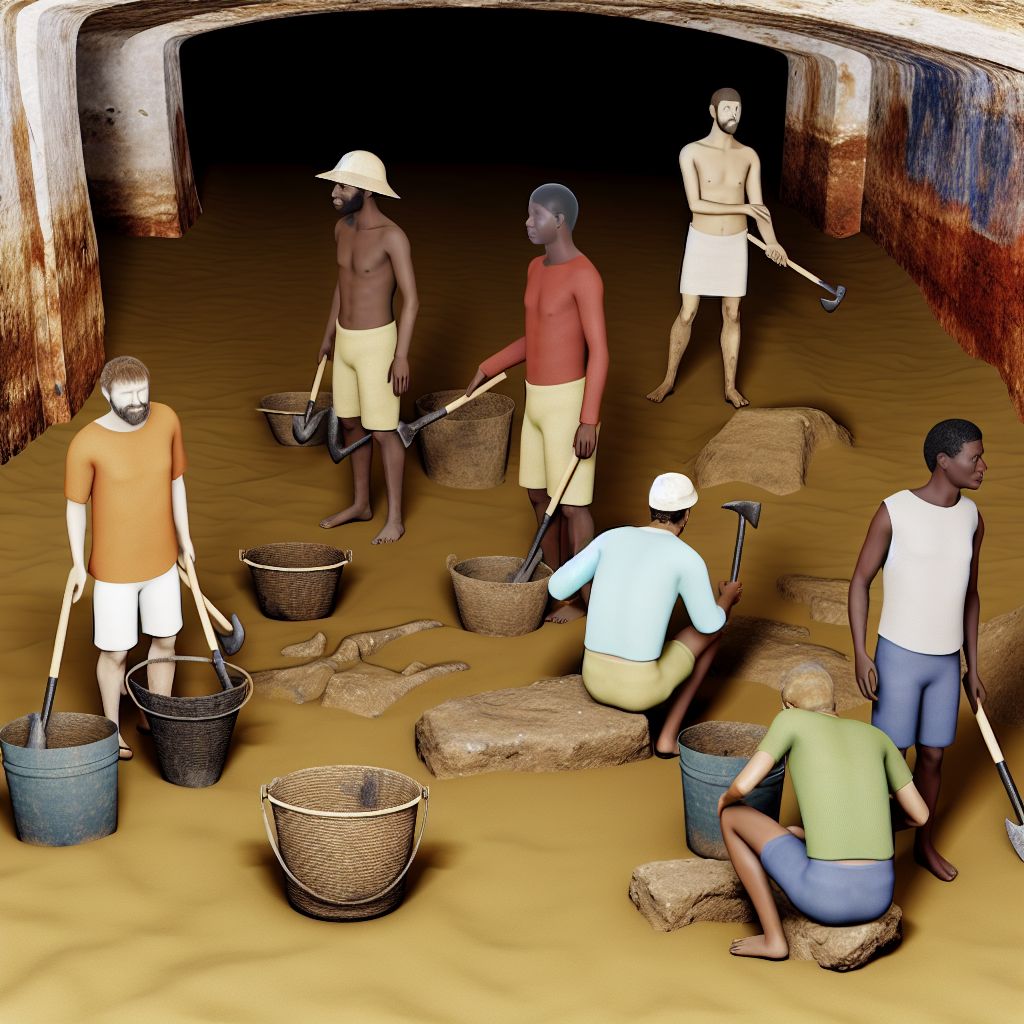In the travel context, archaeology refers to the exploration and experience of ancient sites where travelers can learn about historical civilizations and their cultures through the remains they left behind. Archaeological tourism, or "archaeotourism," involves visiting sites that have significant archaeological value, such as ruins, artifacts, and landscapes shaped by former societies.
Description

Archaeological travel allows tourists to delve into the past and gain a direct connection with human history by exploring sites where archaeologists have uncovered evidence of ancient life. These journeys often include guided tours led by experts who provide insights into the historical significance, excavation processes, and cultural impact of the findings. This type of travel is not only educational but also fosters a deeper appreciation of how civilizations have evolved over millennia.
Application Areas
Archaeological travel spans a wide range of destinations and activities:
- Historic Ruins: Sites like Machu Picchu in Peru, the Roman Forum in Italy, or Angkor Wat in Cambodia attract millions of visitors interested in the ancient architectures and stories they embody.
- Museum Visits: Many archaeological tours include visits to museums where artifacts from dig sites are preserved and displayed, providing context and detailed information about the civilizations that created them.
- Educational Programs: Workshops, lectures, and interactive sessions that may involve actual participation in archaeological digs or conservation efforts.
Well-Known Examples
Prominent examples of archaeological travel destinations include:
- Petra, Jordan: An ancient city carved into red desert cliffs, famous for its rock-cut architecture and Water conduit system.
- The Pyramids of Giza, Egypt: Iconic ancient monuments built as the final resting places of Egypt’s Pharaohs.
- Teotihuacan, Mexico: Known for its massive Pyramids of the Sun and Moon, this site offers insight into pre-Columbian Mesoamerican cultures.
Treatment and Risks
Travel to archaeological sites carries responsibilities and risks. Visitors must respect and preserve these sites, adhering to guidelines that prevent damage, such as not touching delicate structures or removing artifacts. Physically, some sites are in remote locations that require hiking or climbing, which may pose challenges for those with limited mobility or certain health conditions.
Similar Terms
Related concepts in the context of travel include:
- Cultural Heritage Tourism: Visiting sites that showcase the heritage and traditions of local cultures, often overlapping with archaeological sites.
- Eco-Historical Tourism: Combining ecological and historical aspects of a destination, focusing on how ancient people interacted with their environments.
Weblinks
- top500.de: 'Archaeology' in the glossary of the top500.de
Summary
Archaeology in the travel context enriches the travel experience by connecting tourists with humanity’s ancient past through immersive visits to sites where they can learn about archaeological discoveries firsthand. It promotes educational tourism and helps preserve global heritage, allowing future generations to learn from and appreciate our shared human history.
--
Related Articles to the term 'Archaeology' | |
| 'Chalcolithic' | ■■■■■■■■■■ |
| Chalcolithic in the context of travel refers to a historical period also known as the Copper Age, characterized . . . Read More | |
| 'Mausoleum' | ■■■■■ |
| Mausoleum: A mausoleum is an external free-standing building constructed as a monument enclosing the . . . Read More | |
| 'History' at maritime-glossary.com | ■■■■■ |
| Deutsch: Geschichte / Español: historia / Português: história / Français: histoire / Italian: storia . . . Read More | |
| 'Castle' | ■■■■■ |
| Castle in the travel context refers to a large building or group of buildings fortified against attack . . . Read More | |
| 'Highlight' | ■■■■■ |
| In the travel context, highlight refers to an attraction, experience, or aspect of a destination that . . . Read More | |
| 'Realm' | ■■■■■ |
| Realm: In the travel context, realm often refers to a specific area or domain characterized by its unique . . . Read More | |
| 'Shrine' | ■■■■■ |
| In the travel context, shrine refers to a holy or sacred place, often dedicated to a specific deity, . . . Read More | |
| 'Greenhouse' | ■■■■■ |
| \"Greenhouse\" could be creatively interpreted or linked to travel in several indirect ways: Eco-Tourism . . . Read More | |
| 'Sense' | ■■■■■ |
| Sense: In the travel context, \"sense\" often refers to the way travel experiences appeal to our five . . . Read More | |
| 'Knight' | ■■■■■ |
| Knight in the travel context often refers to the thematic exploration of medieval history and culture . . . Read More | |
